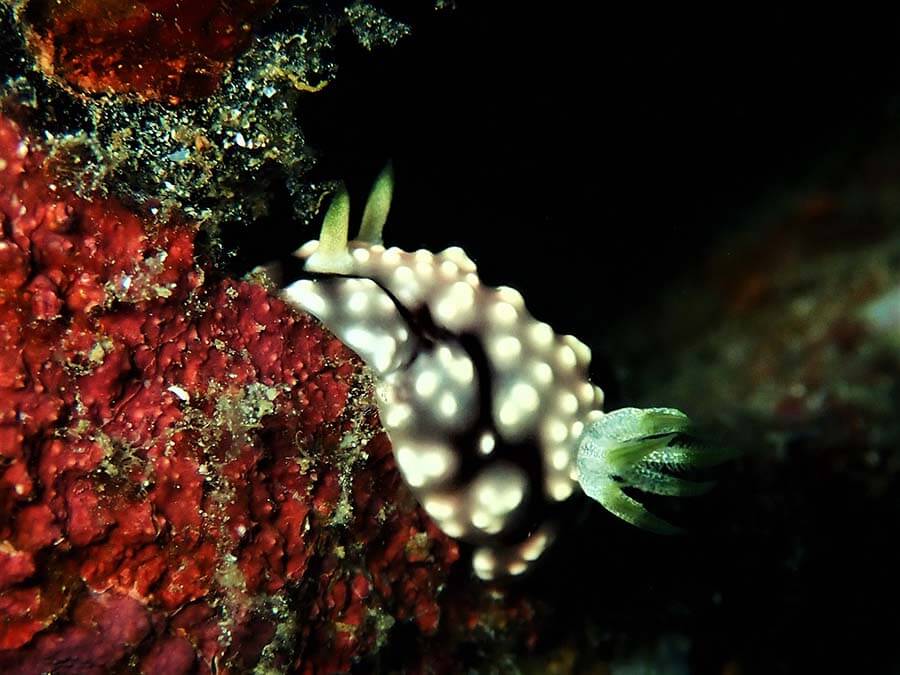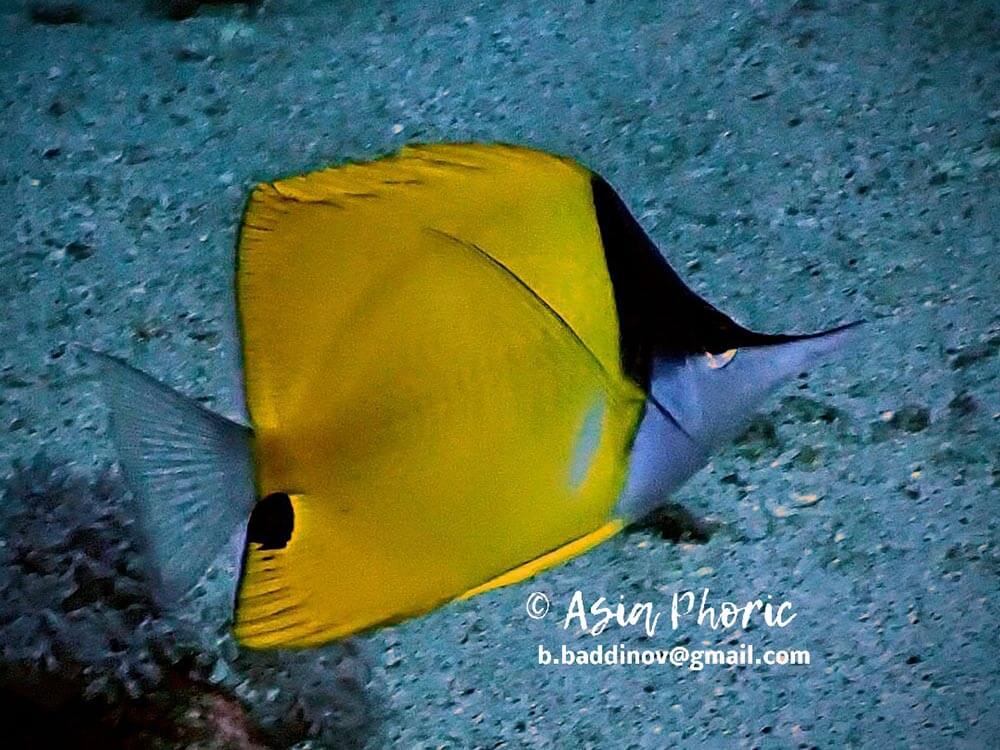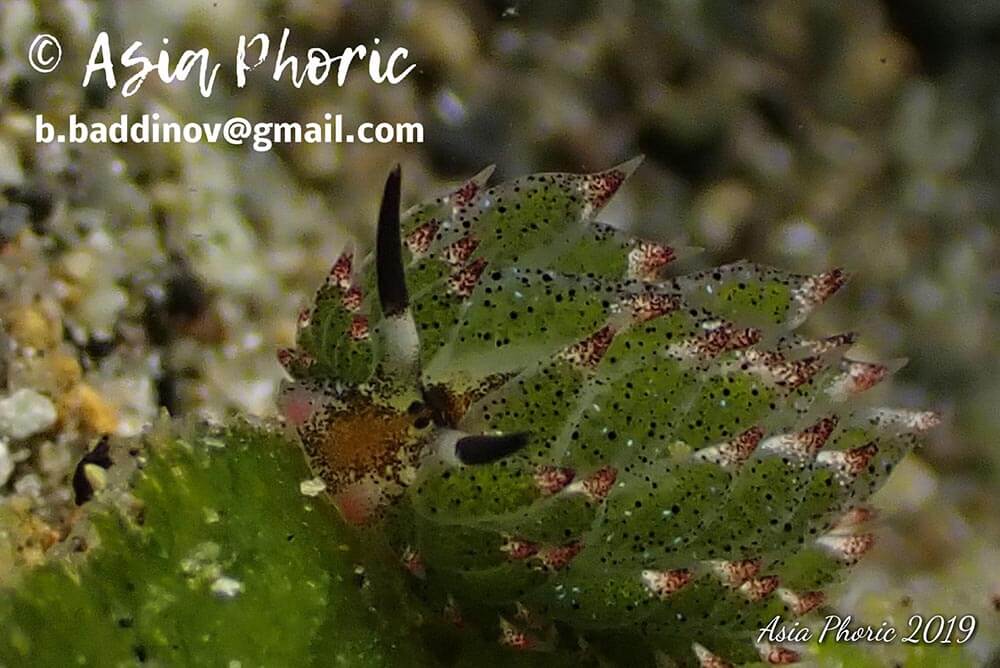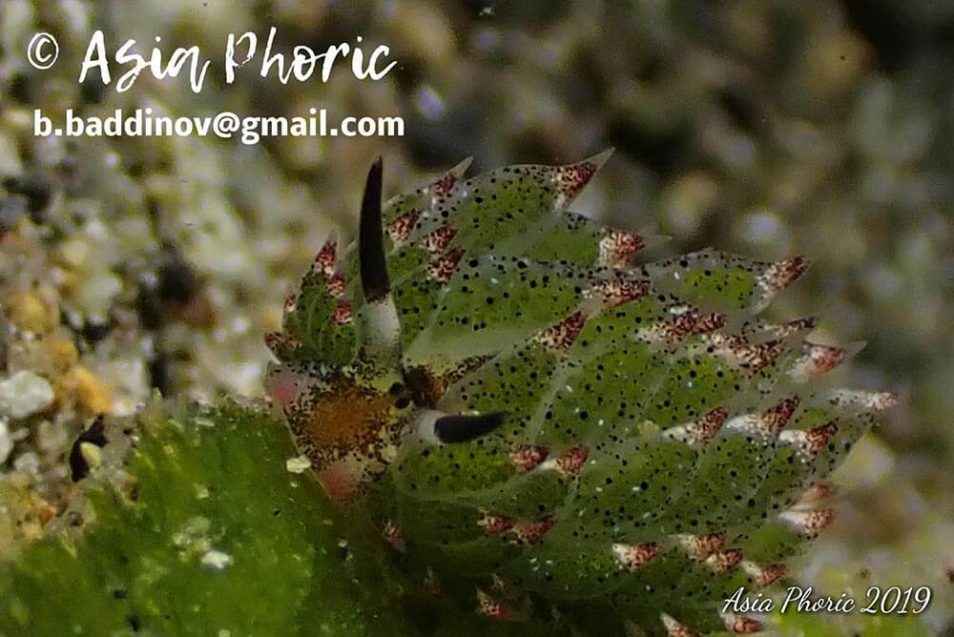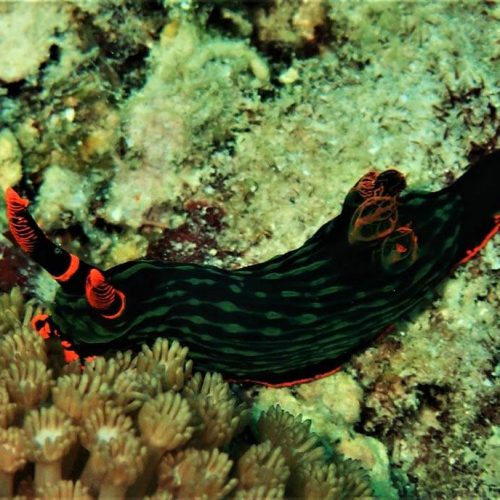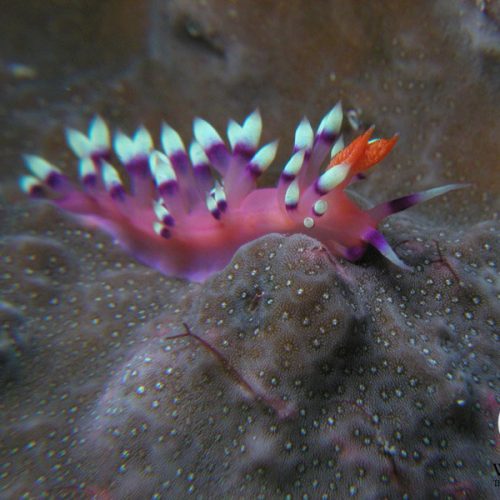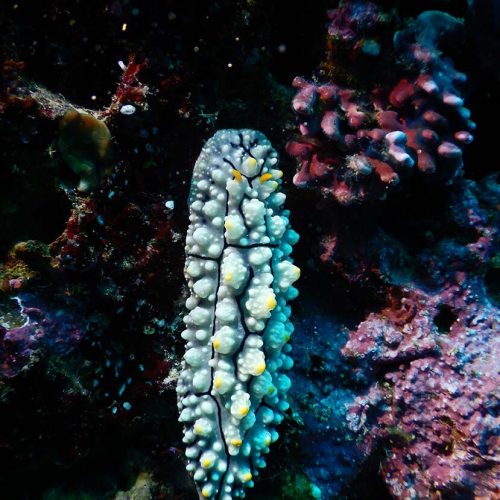Contents
Costasiella kuroshimae (also known as a leaf slug, sea sheep, or leaf sheep) is a species of sacoglossan sea slug. Costasiella kuroshimae are shell-less marine opisthobranch gastropod mollusks in the family Costasiellidae.[1] Despite being animals, they indirectly perform photosynthesis, via kleptoplasty.[2]
Description
Discovered in 1993 off the coast of the Japanese island Kuroshima, Costasiella kuroshimae have been found in the waters near Japan, the Philippines, and Indonesia. They live in tropical climates.[3] The type locality is Kuroshima, Taketomi, Okinawa, Ryukyu Islands.[4]
They have two dark eyes and two rhinophores that emerge from the tops of their heads that look similar to sheep's ears or insect antennae.[5] They range in size from 5 to 10 mm (1⁄4 to 3⁄8 inch) in length. Their leaf-like appearance is credited to the cerata featured in rows across their body. These cerata contain digestive glands that assist the Costasiella kuroshimae in obtaining and storing food. They also aid in defense and respiration. [6]
Costasiella kuroshimae are capable of a physiological process called kleptoplasty, in which they retain the chloroplasts from the algae they feed on. Absorbing the chloroplasts from algae which enables them to indirectly perform photosynthesis.[7]
Costasiella kuroshimae is a selective feeder of algae from the genus Avrainvillea,[5] from which it sequesters chloroplasts into its own cells, retaining them for short-term photosynthesis. Even in the absence of active photosynthesis, chloroplasts provide a nutrient storage or "larder" that facilitates the survival of the slug without food for an extended period of time.[8] This points out the peculiar adaptation of C. kuroshimae among nonphotosynthetic marine animals.
Gallery
-
A frontal picture of a Costasiella kuroshimae.
-
Costasiella kuroshimae taken in Secret Bay Anilao dive site, Batangas, Philippines
-
Costasiella kuroshimae at Wakatobi National Park, 2015
-
Costasiella kuroshimae at Koh Phangan, 2014
-
Costasiella kuroshimae at Bali, Indonesia.
References
- ^ Bouchet P (2014). "Costasiella kuroshimae Ichikawa 1993". World Register of Marine Species. Retrieved 17 January 2015.
- ^ Christa, Gregor; B. Gould, Sven; Franken, Johanna; Vleugels, Manja; Karmeinski, Dario; Handeler, Katharina; F. Martin, William; Wagele, Heike (23 May 2014). "Functional kleptoplasty in a limapontioidean genus: phylogeny, food preferences and photosynthesis in Costasiella, with a focus on C. ocellifera (Gastropoda: Sacoglossa)". Journal of Molluscan Studies. 80 (5): 499–507. doi:10.1093/mollus/eyu026.
- ^ Palomares ML, Pauly D, eds. (2023). "Costasiella kuroshimae" in SeaLifeBase. March 2023 version.
- ^ Jensen KR (2007). "Biogeography of the Sacoglossa (Mollusca, Opisthobranchia)" (PDF). Bonner Zoologische Beiträge. 55 (3/4): 255–81. Archived from the original (PDF) on 2013-10-05.
- ^ a b Oceana. "Leaf Sheep." Oceana, [Date Accessed: 26 Oct. 2023], https://oceana.org/marine-life/leaf-sheep/
- ^ Togawa, Yumiko; Shinji, Junpei; Fukatsu, Takema; Miura, Toru (2019-10-01). "Development of Cerata in the Cladobranchian Sea Slug Pteraeolidia semperi (Mollusca: Gastropoda: Nudibranchia)". Zoological Science. 36 (5): 387. doi:10.2108/zs190057. ISSN 0289-0003.
- ^ Händeler K, Grzymbowski YP, Krug PJ, Wägele H (December 2009). "Functional chloroplasts in metazoan cells - a unique evolutionary strategy in animal life". Frontiers in Zoology. 6 (1): 28. doi:10.1186/1742-9994-6-28. PMC 2790442. PMID 19951407.
- ^ Christa, G., Wescott, L., Schaadt, T., Händeler, K., & Waegele, H. (2014). Photosynthesis in Sacoglossa: the impact of food sources, photosynthetic efficiency, and the occurrence of kleptoplasty in Costasiella ocellifera. Journal of Experimental Marine Biology and Ecology, 461, 57-61.

